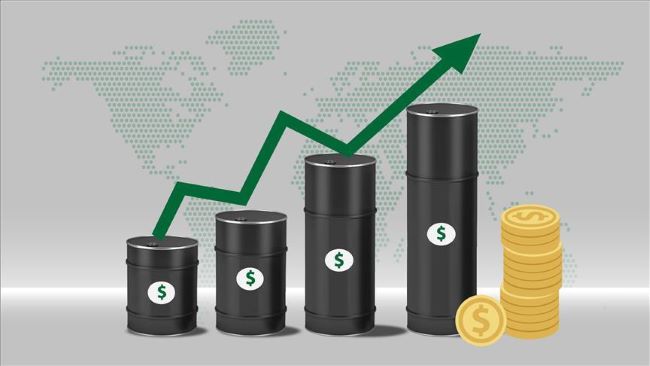Tuesday saw a rise in crude oil prices around the world as the market assessed the continued supply threats posed by Iran’s oil flows and the ongoing war between Israel and Palestine, which is expected to worsen.
The closing price of $86.35 a barrel on Monday represented a 0.30% increase over the international benchmark oil Brent selling at $86.61 per barrel today.
West Texas Intermediate (WTI), the benchmark for the United States, was up 0.32% from Monday’s closing price of $82.31 per barrel to $82.58 per barrel at the same time.
The continued hostilities between the two countries heighten worries that they might turn into a regional crisis that would cut off oil supply lines and worsen the supply shortfall that is expected to last the remainder of the year.
Meanwhile, the US government’s assertion that Iran is behind the attacks on US soldiers in Syria and Iraq has raised concerns about a potential disruption in Iranian oil exports, which has driven up oil prices.
Rising demand concerns, however, curbed upward price pressures ahead of Wednesday’s US Federal Reserve (Fed) meeting, which is expected to hold the policy rate high for longer than expected.
Additional price increases were also tempered by worries that China, the world’s top oil importer, would see a decline in oil consumption as a result of the industrial activity data that was lower than anticipated.
The week began with the oil market in a precarious position. But geopolitical risks are still high, and the Middle East Energy Crisis will continue to affect the short-term forecast.
The oil market came under significant pressure yesterday with ICE Brent settling 3.35% lower on the day, while WTI traded down to its lowest level since the Israel-Hamas conflict. This is despite the fact that there are clear upside risks still facing the market in the current geopolitical environment.
Disruptions to Iranian oil flows remain the most obvious risk to the market, which could see anywhere between 500k b/d and 1m b/d of supply lost if the US were to strictly enforce sanctions once again.
Up until now, developments in the Middle East have yet to impact the oil supply. In the absence of supply disruptions from the region, it is difficult to see a significant and sustained upside in prices.
Also important for the market are developments in Venezuela. Recently, the US decided to ease sanctions against Venezuela in return for the promise of fairer elections in 2024.
The expectation was that the lifting of these sanctions could see Venezuela increase its oil supply in the region of 200k b/d. However, overnight, the supreme court in Venezuela suspended the results of the opposition’s primary elections, which will likely call into question whether the sanctions relief provided to Venezuela will remain in place.
On the calendar for today, December Brent futures expire and the API will also release weekly US inventory data. In addition, markets will await China’s official PMI data which will be released this morning.
Expectations are for the manufacturing PMI to come in at 50.2 for October, unchanged from the previous month. A second consecutive reading in expansion territory will likely go down well with markets, showing some further signs of firming by the Chinese economy.














